site search
online catalog
SCARCE INDIAN WAR US ARMY 1872 PATTERN SHOE: FORT PEMBINA, NORTH DAKOTA, ESTABLISHED 1870
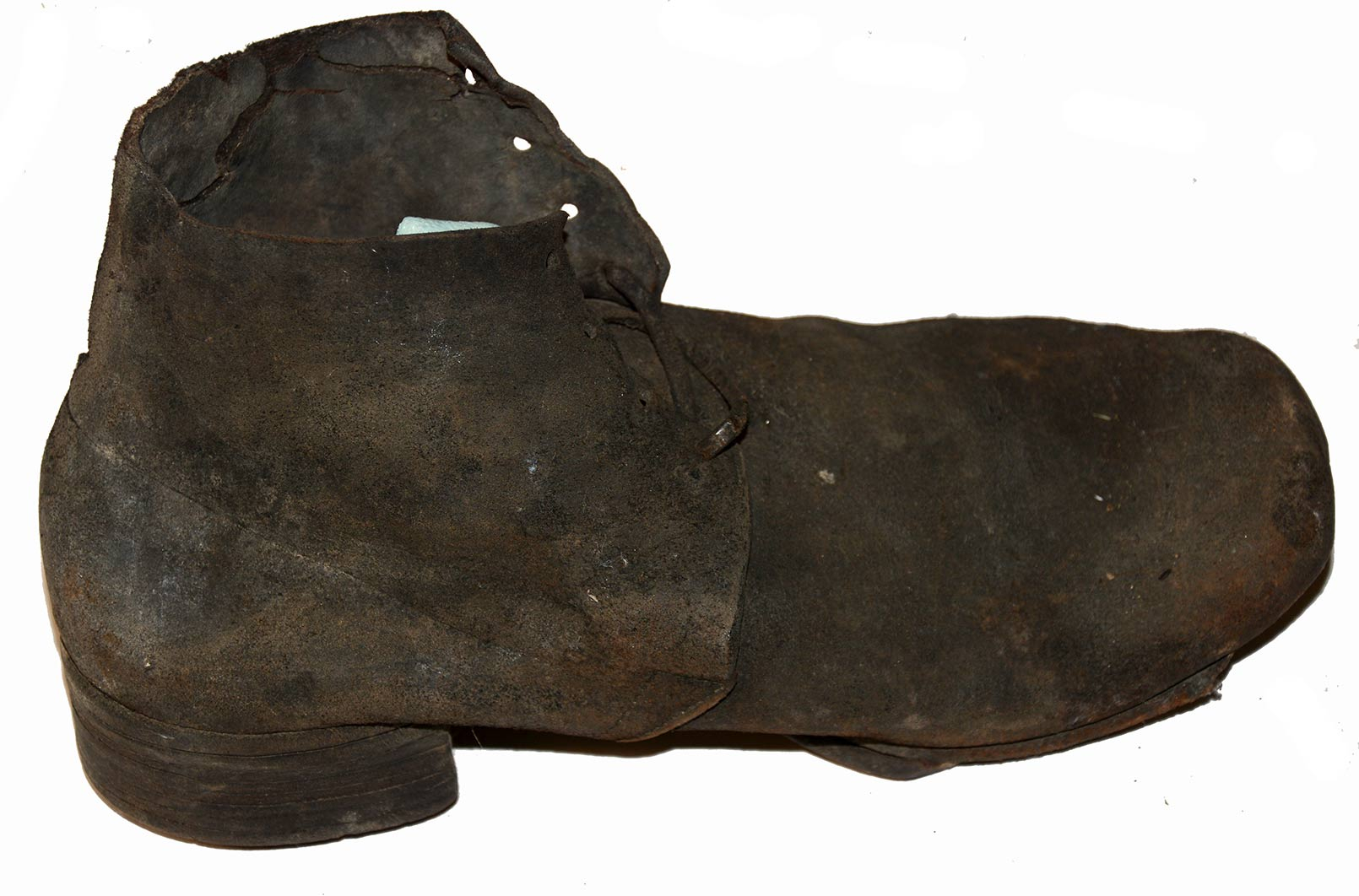
Hover to zoom

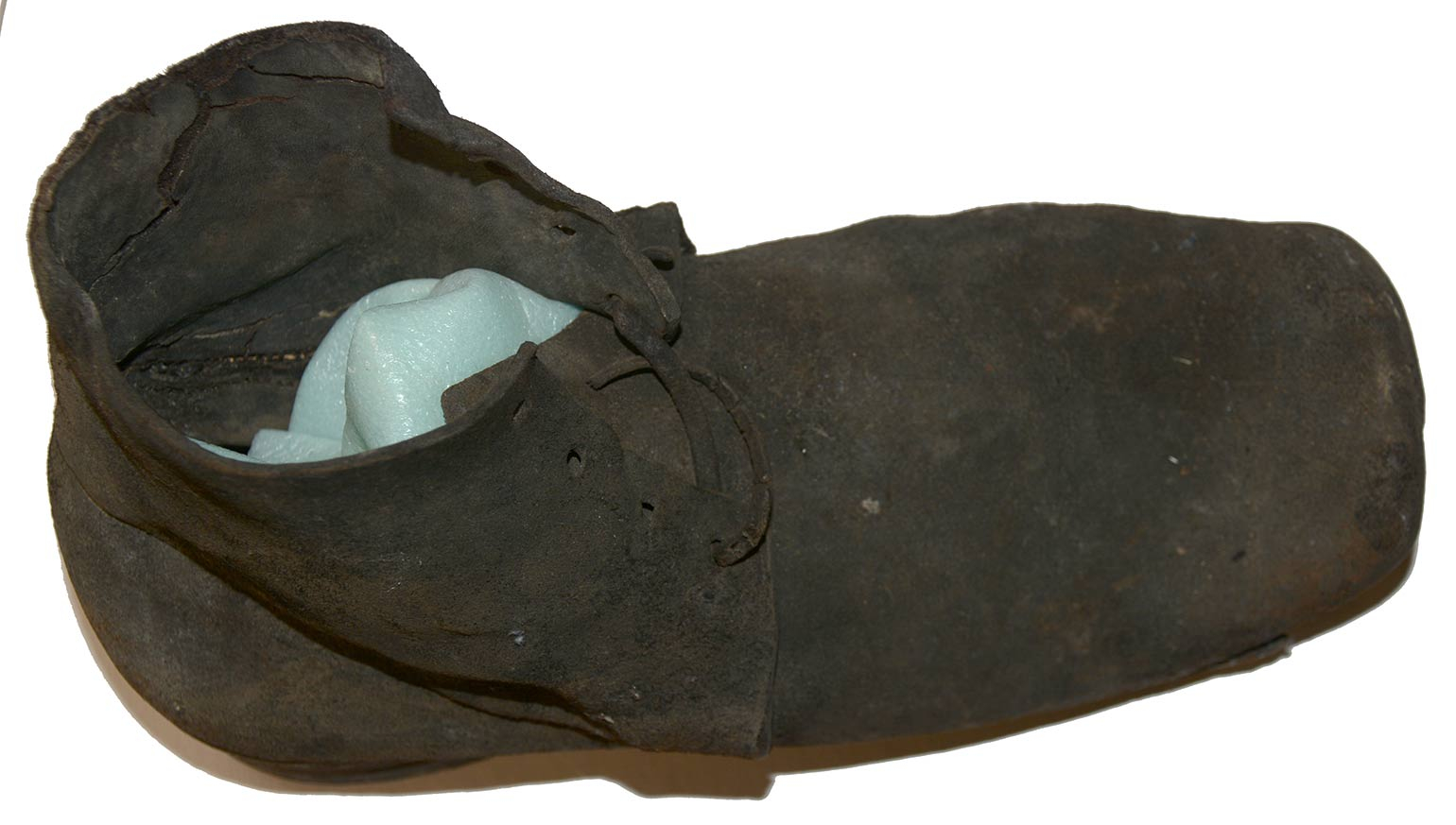
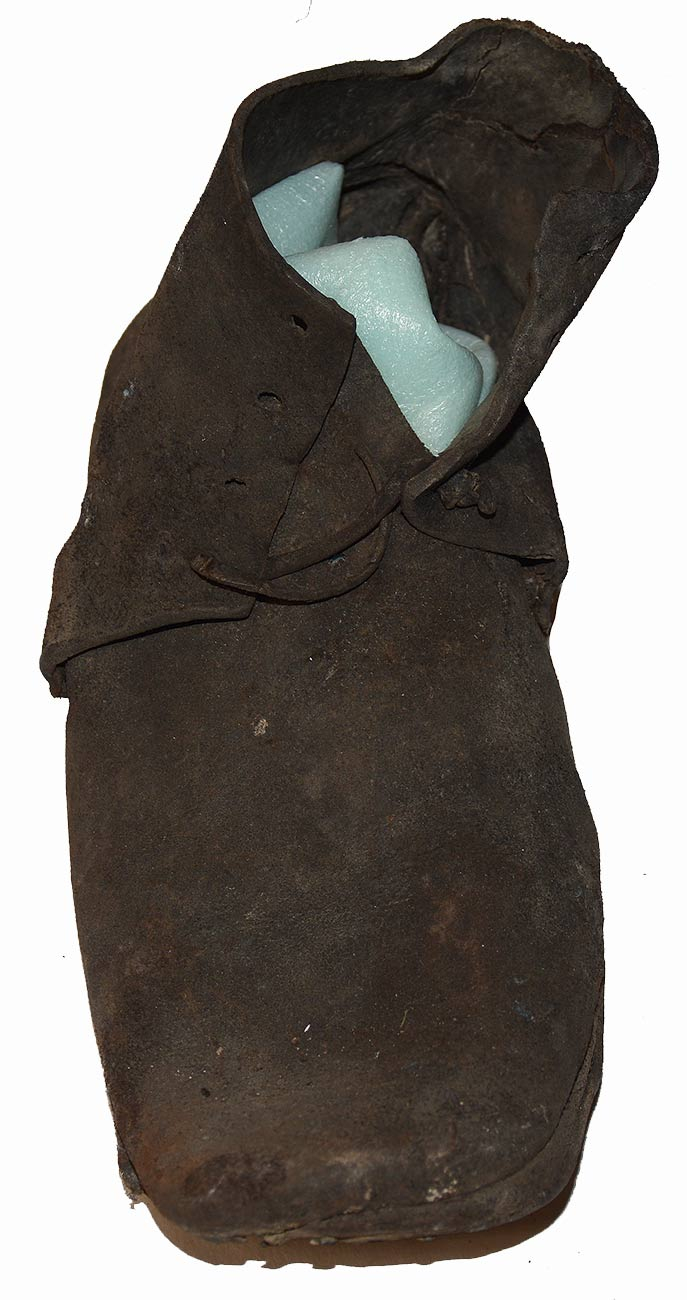
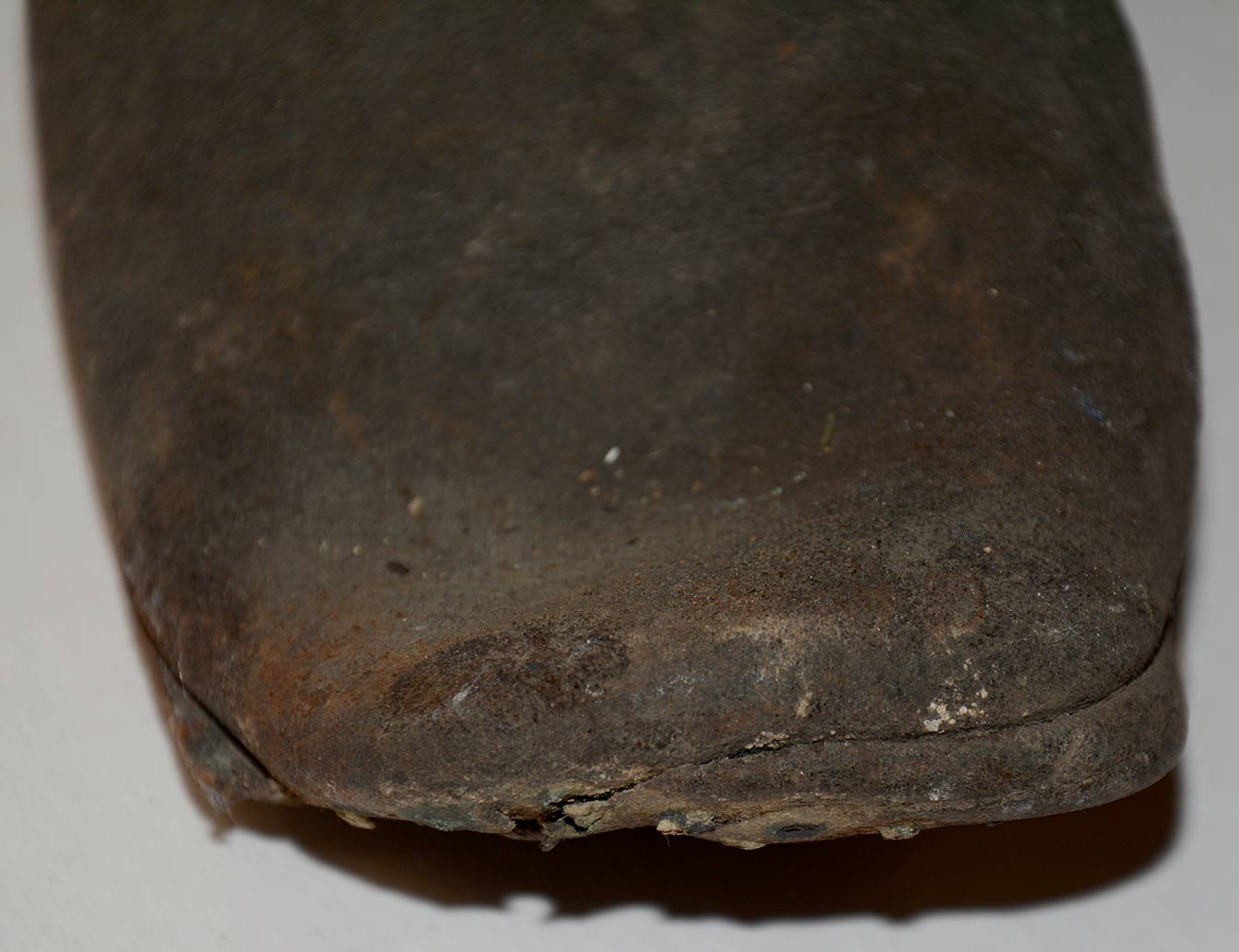
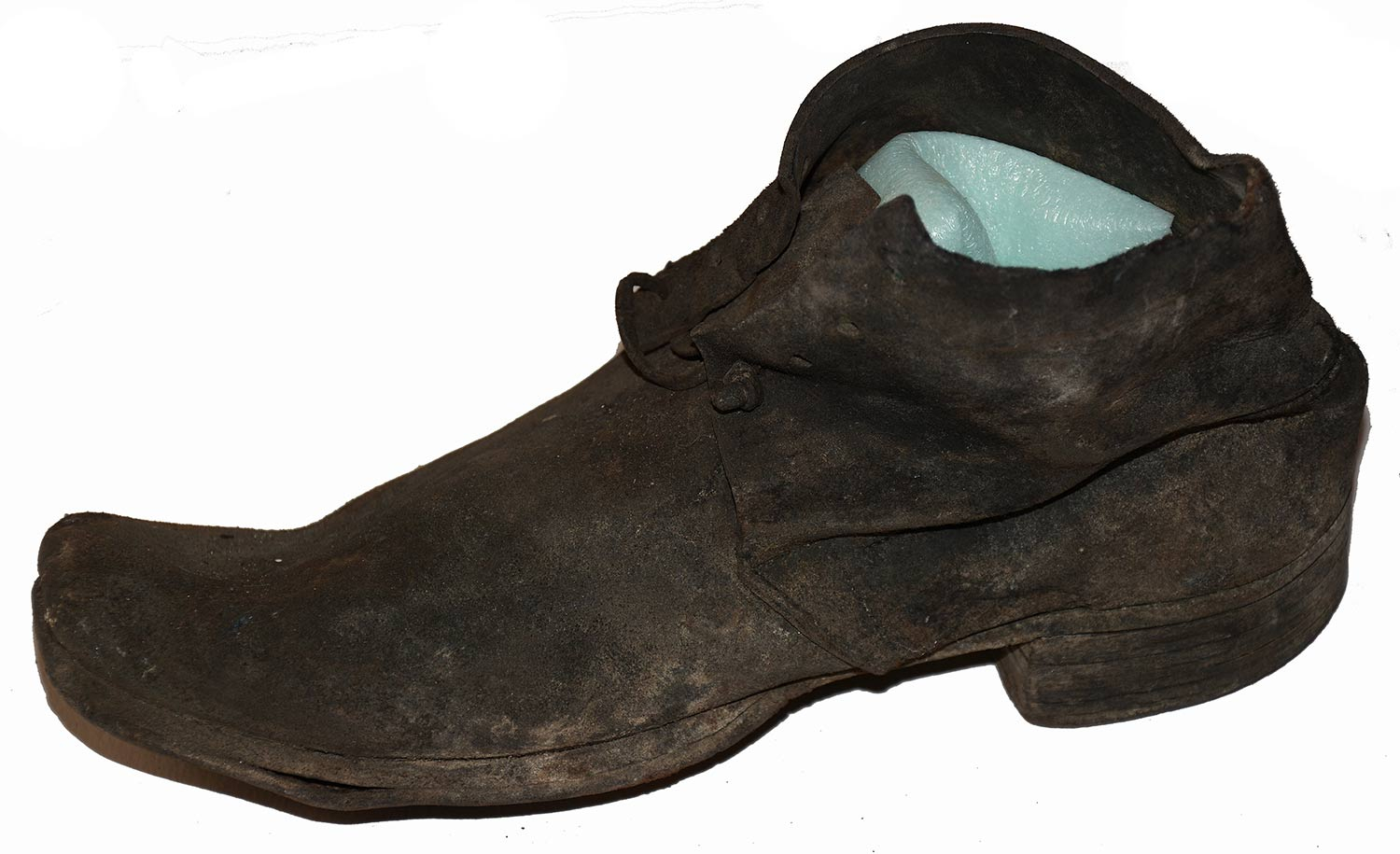
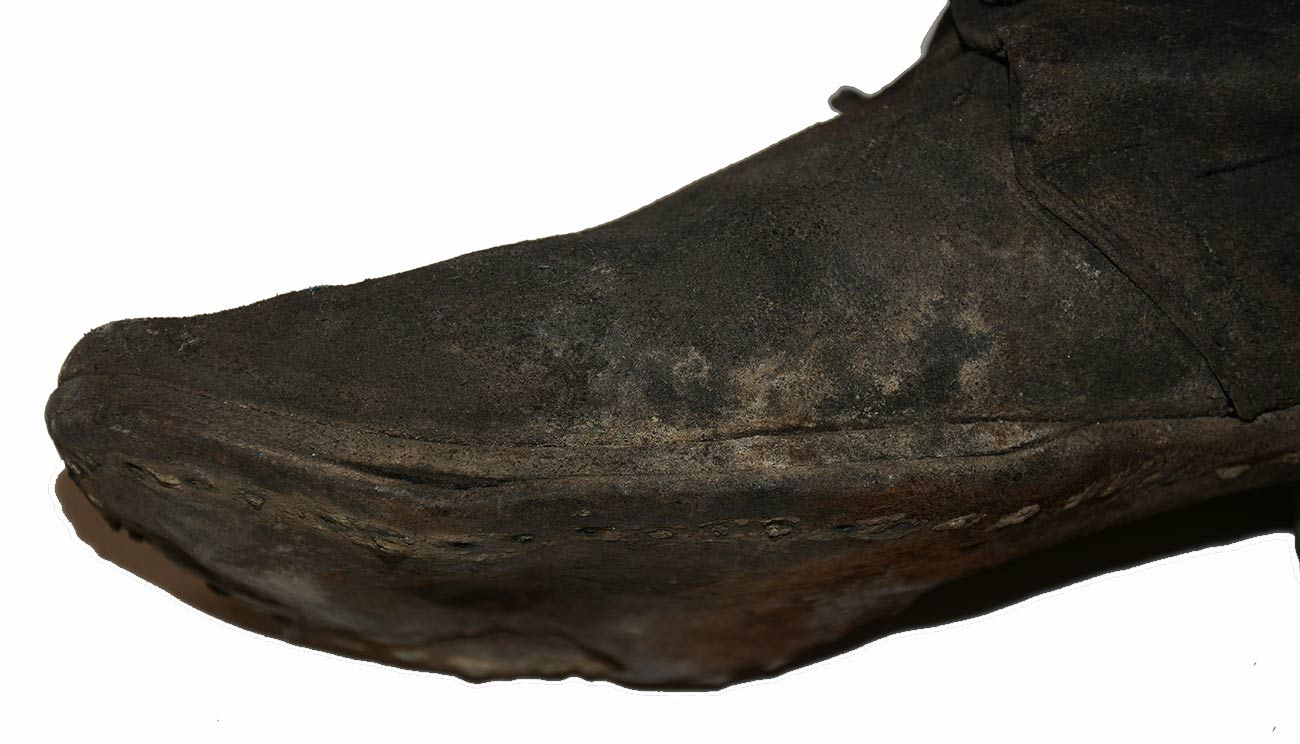
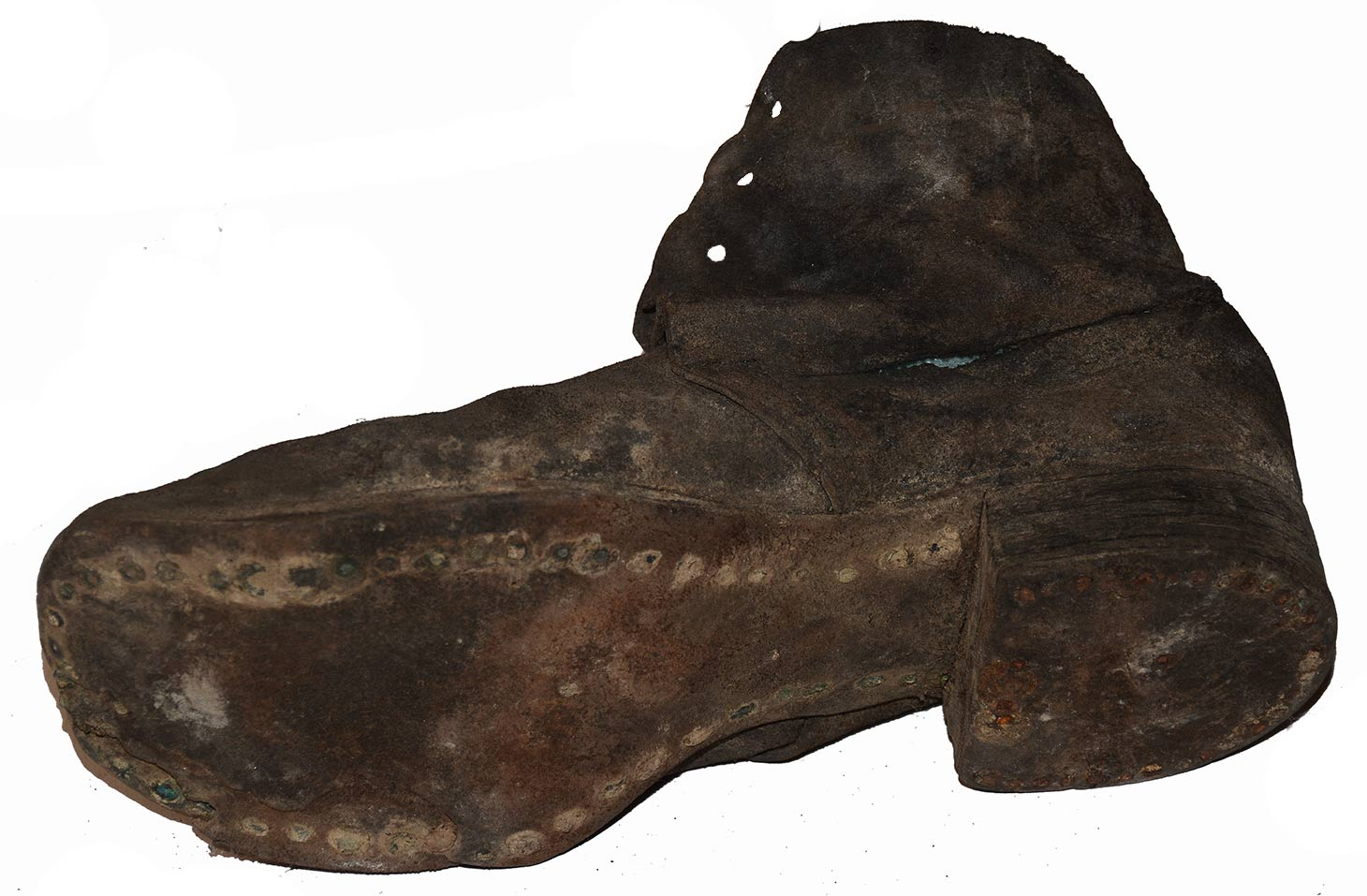
$1,250.00
Quantity Available: 1
Item Code: 1052-303
Shipping: Determined by Method & Location of buyer
To Order:
Call 717-334-0347,
Fax 717-334-5016, or E-mail
New pattern shoes and boots were introduced in the U.S. Army in 1872 and in use until the 1880s. These shoes improved upon Civil War issue patterns mainly by using brass screws in the soles, rather than just pegs or sewing, to better withstand campaigning on rough and rocky ground such as the army operated over in the American southwest. This is a good example of the pattern, also known as “cable screwed,” worn and discarded by a soldier stationed at Fort Pembina in North Dakota. Like the Civil War issue patterns, these had a square toe, rough-side out black leather uppers consisting of vamp and quarters, an interior counter at the lower back, holes for shoelace or thong, though with the uppers coming up a bit higher on the ankle than the Civil War versions.
This one is solid, can be handled, and displays well, though the leather is stiff and oxidized slightly toward brown. Part of the original shoelace is present. The holes are not torn out and consist of four along each side and two on the tongue. The heel is in place and consists of seven layers nailed to the sole and they are tight and in place- though the nails show corrosion. The small brass screws are all there, some showing gray and brown and some a green verdigris. The sole is shows a wear spot on the left starting at the toe, about an inch wide and running back about 3 inches- perhaps the reason the shoe was discarded, though we note that the stitching line of the counter on the left side has torn, forming a narrow slit- the stitching holes forming a serrated line that could tear- which would be a more serious reason to discard it.
This was excavated on private property with the owner’s permission and is so well preserved by anaerobic dig conditions that it could be taken as a barn or attic-find. (Think of those Roman sandals and other incredibly well-preserved artifacts coming up from similar conditions in Britain at the Roman army fort of Vindolanda.) Fort Pembina was situated in the Red River Valley in North Dakota near the Canadian border, was established in 1870 and in operation until 1895. Trading posts existed earlier in the area as part of the fur trade, and the first U.S. military post there was temporary- manned by a detachment of Minnesota troops in 1863-1864 following the 1862 Sioux uprising. In March 1870 a new fort was established south of the Pembina River and about 200 yards west of the Red River, completed by July and named in honor of Gen. George H. Thomas. The name was changed to Fort Pembina in September and the initial garrison consisted of two companies of the 20th US Infantry. Their main purpose was to provide security for settlers worried about Sioux returning south from Canada, but much of their duty was in escorting boundary surveys along the Canadian border and preventing Fenian raids heading north into Canada.
The fort included enlistedmen’s barracks, officers’ quarters, guard house, ordnance storehouse, company kitchen, root house, laundress’s quarters, quarters for civilian employees, hospital and hospital servant’s house, a barn for the “hospital cow,” quartermaster and commissary offices and storehouse, stables, wagon shed, etc. The garrison reached peak strength in 1878 at 200, but the average was about 125 enlisted men and 8 officers. An October 1885 return listed 97 men, 2 field pieces, 1 mountain howitzer, 100 rifles, 19 pistols, 23 mules, and 9 wagons. By 1890 the post had just 23 men, and after an 1895 fire destroyed some 19 buildings it was decided to abandon the fort rather than rebuild, the last detachment left in September. The property was turned over to the Interior Department and later sold in 1902.
This is a good example of a regulation issue shoe worn by a member of the frontier army in the early Indian Wars. It displays very well and the wear on the sole is nice indicator of some hard marching. [sr][ph:L]
~~~~~~~~~~~~~~~~~~~~~~~~~~~~~~~~~~~
THIS ITEM, AS WITH ALL OTHER ITEMS AVAILABLE ON OUR WEB SITE,
MAY BE PURCHASED THROUGH OUR LAYAWAY PROGRAM.
CLICK HERE FOR OUR POLICIES AND TERMS.
THANK YOU!
Inquire About SCARCE INDIAN WAR US ARMY 1872 PATTERN SHOE: FORT PEMBINA, NORTH DAKOTA, ESTABLISHED 1870
Most Popular
Historical Firearms Stolen From The National Civil War Museum In Harrisburg, Pa »
Theft From Gravesite Of Gen. John Reynolds »
Selection Of Unframed Prints By Don Troiani »
Fine Condition Brass Infantry Bugle Insignia »
Large English Bowie Knife With Sheath 1870’S – 1880’S »
Imported (Clauberg) Us Model 1860 Light Cavalry Officer's Saber »
featured item
A BEYOND RARE CS ARKANSAS FROCK COAT AND "BONNET DE POLICE"
Mr. Ray Richey, owner of the Texas Civil War Museum, purchased this uniform coat and hat directly from an Arkansas estate in 2003. Twenty-six years prior to this it was acquired from the Beneux Plantation in Mulberry, Arkansas. Positive… (1268-057). Learn More »


